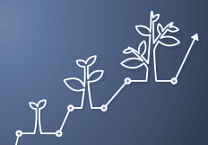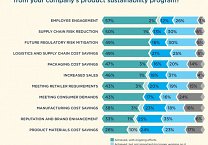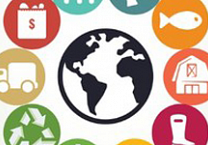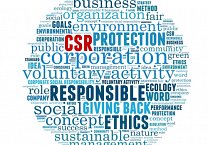3 Key Resources for Benchmarking your Sustainability Program
by Tara Gallagher
17 February 2017
What better time to benchmark your sustainability program than the start of the year? Evaluating whether your program is following best practices can spur improvement and provide justification for prioritizing initiatives. This helps determine whether teams are headed in the right direction and moving with enough momentum to meet the sustainability challenges of the future and drive business value. With growing evidence demonstrating the business case for sustainability, such as $8 billion earned in one year by a sample of 150 companies, there are compelling reasons to gauge your program’s health.
Three key tools can help highlight these opportunities across your program and evaluate specific strategies that may be the focus of your program in the new year.
Ceres' Roadmap for Sustainability Provides a General Benchmark
The first decision is whether to benchmark your entire sustainability program or a portion of it. A good starting point may be to review your overall program. The updated CeresRoadmap for Sustainability outlines 20 sustainability expectations for corporate performance that promote Ceres’ goal of accelerating the adoption of sustainable business practices. The Roadmap is particularly strong in the areas of governance, stakeholder engagement and disclosure. There are also performance measures covering operations, supply chain, transportation and logistics, products and services, and employees.
Self-described as an “owners’ manual” as opposed to a traditional tool, the Roadmap assessment requires a thoughtful process involving key team members, preferably in conjunction with a materiality assessment of key risks and opportunities. Some of the Roadmap expectations are quite specific, such as the one for renewable energy:
- Companies will obtain at least 30 percent of energy from renewable sources by 2020 on the road to 100 percent by 2030
Other expectations are more qualitative and invite discussion on continued improvement, such as this one:
- Board Oversight: Corporate boards will provide formal oversight for corporate sustainability strategy and long-term performance. Sustainability considerations will be integrated into board discussions on strategy, risk and revenue.
Companies can compare their results to specific companies or sectors in Ceres’ Gaining Ground report, which examined how more than 600 companies performed against the Roadmap in 2014. Selected findings include:
- There is a need for greater Board of Director involvement in sustainability oversight.
- A growing number of companies are incorporating sustainability performance into executive compensation packages.
- Companies are not adequately addressing water risks.
- More companies are setting clear sustainability standards for suppliers.
Other benchmarks to consider when evaluating your overall program include the UN Sustainable Development Goals, the newly revised Global Reporting Initiative (GRI) Standards, the Sustainability Accounting Standards Board (SASB) standards for your sector, and the Dow Jones Sustainability Index (DJSI).
Benchmark Specific Program Strategies
Connecting sustainability to the heart of your business is necessary for success. Many programs with a mature focus on operations lag in addressing product sustainability – from sourcing to innovation to packaging. Pure Strategies recently unveiled an updated Product Sustainability Program Assessment to help companies identify strategies for accelerating product sustainability through best practice case studies from leaders. (Disclosure: I work for Pure Strategies.)
The free tool is a web-based survey with 12 short questions that takes less than ten minutes to complete. Your answers are compared to best practices identified from Pure Strategies’ market research and a report is immediately provided that includes customized recommendations for improvement, accompanied by examples of strategies from other companies to help you take next steps. The tool provides a rapid, objective program evaluation that can serve as a valuable starting point for deciding where to focus.
Pure Strategies’ global market research, engaging hundreds of firms over the last several years, has revealed that business-relevant targets linking sustainability to revenue is a common improvement opportunity for most companies. This approach can include having a target to pursue sustainability initiatives through innovation or in a portion of the product portfolio. An example is Colgate Palmolive’s goal to ”increase the sustainability profile in all new products we produce and in the balance of the portfolio.” Leaders have found that this approach provides a successful strategy for connecting product sustainability to the core of the business. Another area where companies typically show room for improvement concerns embedding sustainability into product development from concept to commercialization. Scoring poorly in this area can help bring attention to this issue internally.
Benchmark Your Program Using Industry Tools
Industry-specific organizations have developed tools and impact reports that highlight the hotspots, challenges and opportunities unique to their sector. Universities have the STARStool; apparel brands have the Higg Index; even breweries have their own tool. The framework developed by the Retail Industry Leaders Association (RILA) is particularly noteworthy as it challenges retailers to explore leadership approaches and also outlines to brands where their important customers may be heading.
The 2016 Retail Sustainability Management Leadership Model comprises an Excel spreadsheet addressing 30 areas ranging from governance, to risk identification, to storytelling, to supply chain transparency. Answer options illustrate a five-step progression from starting out - all the way to stellar performance. It is instructive to review the latter category’s expectations – with its emphasis on larger collaborations - to see what the experts consider to be game-changing.
Some of RILA’s “transforming” category requirements:
- Profit and sustainability goals are quantitatively linked
- Goals align with science-based targets and consider global and local contexts and environmental conditions
- Strategic partnerships address needs of supply chain workers
- Employee wellbeing is recognized for its return on investment and integrated into company strategy
- Most own-brand products have advanced sustainability benefits that are communicated on-package
- All products are designed with a cradle-to-cradle approach
- Industry and peer alliances further green chemistry innovation
- Green building and certification is expected
- Research group partnerships are designing next-generation processing equipment
Some Final Advice
In addition to using the above tools, many companies benchmark themselves against their peers. This is critical. Of course, you need to understand how the market is changing and what you need to do to stay competitive, but don’t stop there. Some industries do not set a very high bar overall or are weak across the board in key areas. Use some of the tools identified here to aim higher than your peers.
Once you’ve completed your benchmarking, share the results with your team. Don’t worry that performing poorly against these tools may make you look bad. Use the results in a variety of ways to start conversations, to leverage resources, and as a serious springboard to refining your strategies. You can also use the tools to track your progress and, in some cases, to gain public recognition for improving your score, helping you drive more value to your business.
This article originally appeared in Sustainable Brands.
Written by Tara Gallagher
Tara Gallagher, a Senior Advisor at Pure Strategies, specializes in developing and communicating sustainability strategies. An expert in CSR reporting, she wrote the award-winning 2007 and 2008 Seventh Generation Corporate Responsibility Reports as well as the company's 2009 - 2014 reports. Tara has also developed CSR reports and/or other CSR communications for The North Face, EMD Millipore, and numerous other companies. A recipient of the GRI-G4-certified training on the GRI sustainability reporting process, Tara has facilitated materiality assessments for several clients.












